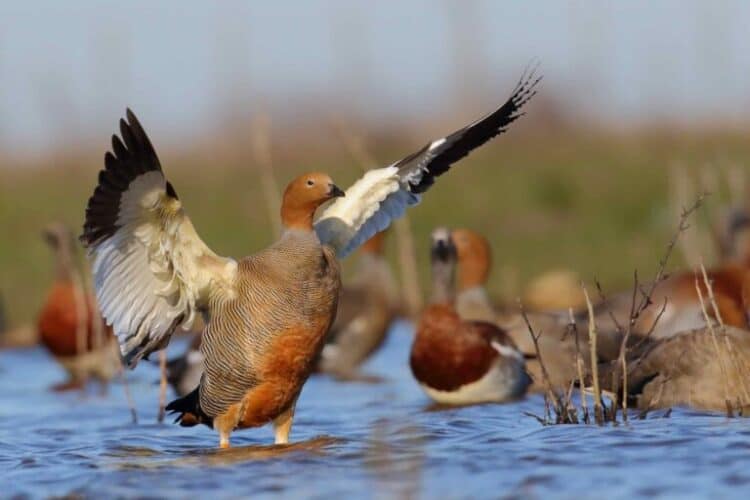I see ruddy turnstones in the nicest places — ocean beaches, mud flats, jetties, rocky shores, and boat docks.
There are usually a few of them around New York and New Jersey in winter.
I saw these in Cape May, New Jersey. They can be found wintering on the coasts of five other continents, too: Europe, Asia, South America, Africa, and Australia.
In summer they fly far north to breed on arctic tundra in North America and Eurasia.

Turnstones get their common name from turning stones. They push their beaks under stones or shells and flip them over to look for food underneath. Sometimes a few turnstones work together to flip something. They also probe in seaweed, soil, and sand. In winter they eat mainly marine invertebrates. In summer they can feast on insects, too.
Ruddy turnstones are about nine inches long. They have black bibs, white bellies, and orange legs. Both males and females have brown wings and when they fly they show bright white stripes on wings and backs. They will soon molt into breeding plumage. A breeding male ruddy turnstone has a reddish back contrasting with the bright white head and black bib; it is very spiffy in a harlequin kind of way.
The ruddy turnstone stars in the opening stanza of Five Feathered Foragers, a poem by John Woods:
The ruddy turnstone flips each shell
From Baffin Island to South Brazil
Julie Feinstein
I am a Collection Manager at the American Museum of Natural History, an author, and a photographer. I live in New York City. I recently published my first popular science book, Field Guide to Urban Wildlife, an illustrated collection of natural history essays about common animals. I update my blog, Urban Wildlife Guide, every Sunday.

Leave a Reply